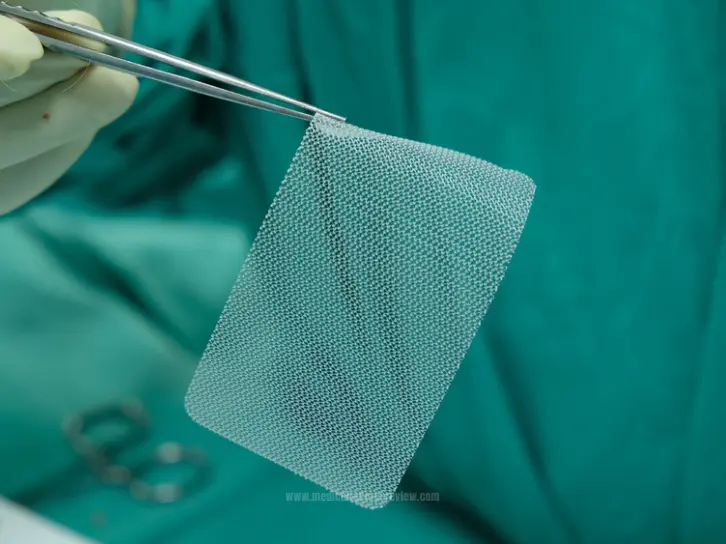Initial Presentation:
Mr. XXXX is a 35-year-old man who came to XXXXX hospital on emergency duty on 11 April 2023 with complaints of abdominal pain. CT scan done of the abdomen and pelvis shows umbilical hernia. The patient was to be scheduled to repair the umbilical hernia by Dr. XXXX, MD.
First Surgical Intervention and the Surgical Error:
On April 14, 2023, Mr. XXXX was operated on for umbilical hernia repair which was planned previously and was performed by Dr. XXXX, MD. He was noted to have been discharged on the same day with no immediate postoperative complications. This turned out to be a surgical operation to the wrong site as it was later referred to, which is a form of surgical indolence.
Complications and Re-admission:
The next day, April 15, 2023, Mr. XXXX returned to the emergency room due to abdominal pain with distension that has been present since his surgery. Other evaluations including another CT scan showed what is called as gaseous distension of the bowel with inflammatory enteritis along the umbilical area and perforation of the small intestine. It was blatant surgical blunders and mistakes with anaesthesia.
Emergency Surgical Intervention:
That very same day, Dr. XXXX found Mr. XXXX with a diagnosis of small bowel perforation, for which an emergency exploratory laparotomy was performed. During this exploring laparotomy, Mr. XXXX was found to have had a small bowel resection, decompressive enterostomy, and removal of infected mesh. Even so, the immediate postoperative recovery was marred by surgical instruments left within the patient, which gave more reason to worry.
Postoperative Complications:
The late postoperative course was of considerable complication because of pulmonary problems, which resulted in Mr. XXXX requiring several ICU this-there hours and many blood transfusions. After a prolonged hospital stay of 2 weeks in continuity of care, Mr. XXXX was seen off in his home on 30th April, 2023. The patient’s informed consent issues showed no torment, which brings up issues defining the duty of care in surgery.
Statistics of Medical Errors in Malpractice Claims:
Further, a study published in The Joint Commission Journal on Quality and Patient Safety in May 2023 focuses on surgical negligence and medical malpractice Closed Claims Database analysis studied provided significant contributing factors:
- Failure to follow policy or protocol (83.8%)
- Failure to review medical records (41.4%)
These estimates corroborate those made by Seiden and Barach that erroneously support the assumption that procedures of wrong site surgery in the United states vary between 1300 to 2500 procedures annually.
Approximately 9.5% is the estimate of the overall percentage of medical errors committed in the United States which indicates this is a space requiring attention for more improvement. In surgery patients’ comfort is essential, so, it becomes important for healthcare providers to take measures that help reduce surgical mistakes and restore patient health.
Implications for Legal Professionals:
This case highlights several points relevant for attorneys specializing in medical malpractice:
- Protocol Adherence: The significant role that adherence to established protocols plays in preventing surgical negligence.
- Medical Record Review: The importance of thorough review of medical records preoperatively.
- Postoperative Monitoring: The need for vigilant postoperative monitoring to quickly identify and address complications.
- Informed Consent: Ensuring patients are fully informed about potential risks associated with their procedures.
- Patient Safety in Surgery: The importance of prioritizing patient safety in surgical procedures.
- Standard of Care Breach: The failure to meet the standard of care in surgery, which can lead to medical malpractice claims.
Medical Malpractice and Neglect: A Case Study for Lawyers
Many lawyers have been assisted by our company “Medical Records Review” in construction of solid cases in a number of cases through their non-destructive primary medical record review services. In civil and torts law cases such as personal injury, legal representation is relied upon to establish the two principles of damages where comprehensive medical record analysis is performed determining the degree of injuries incurred and burden upon the plaintiff consequent to the injuries. For plaintiff lawyers with medical negligence cases, detailed examination enables them to gather more important points in defence of their patients.
When it comes to workers’ compensation cases, their focus on the assessment of medical records indicates the degree of workplace injuries which helps the plaintiffs in recovering their dues. “Medical Records Review” is also extending its assistance towards the mass tort law firms wherein they have to properly verify the medical records and negotiate the compensation for the affected clients. They are also devoted towards other kinds of cases such as nursing home neglect and product liability where their skills help in recovering and proving abuse or the usage of defective products by the patients.
In order to provide comprehensive medical history and render expert medical opinions, “Medical Records Review” guarantees that the lawyers are armed with enough intelligence concerning the complicated legal matters at hand. “Medical Records Review” remains one of the most reputable medical record review companies in the USA equipped with a capable team of doctors and analysts, a multi-tiered quality control system, and a clear and safe working environment.
Conclusion
Cost, satisfaction, success and security factors make lawyers responsible for surgical risks and surgical interventions to right medial target and wrong incision. Evocatively, they appreciate that legal practitioners have a legal clientele where proving negligence in bilateral breast cancer surgery is normal, hence the need to work together with Medics.
More importantly, by changing the culture surrounding surgical errors and education forced on surgical neglect and or patients’ safety practices, lawyers too can help eliminate these kinds of errors from happening in the future.



